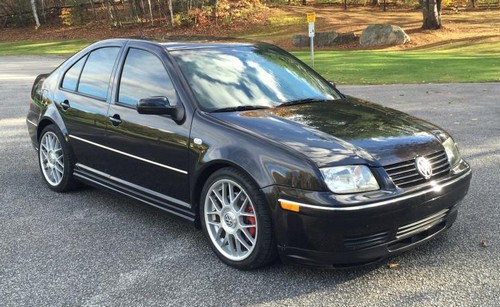Volkswagen Jetta since 2005

Produced since 2005
Aggregate base Golf V over the past time has proven itself very well in the secondary market. Let's see how fair these conclusions turn out to be when it comes to the fifth-generation Jetta sedan and station wagon.
Reviews on the Internet about a car produced from 2005 to 2010 in Germany, Mexico and Russia are varied. On the one hand, almost everyone pays tribute to the German quality, safety margin, comfort and driving talents of the Jetta. However, many find in this car, it would seem, features unusual for a typical Volkswagen. Well, let's try again to go over the shortcomings of a used sedan.
It entered the Russian market not only from domestic dealerships, therefore, by analogy with the Czech Skoda Kodiak, the technical characteristics of this model vary greatly. Cars came from Germany, and sometimes even from America. Nevertheless, the most massive in our country were gasoline engines with a volume of 1.4 liters (turbocharged with a capacity of 140 hp), 1.6 (aspirated with 102 hp) and 2.0 liters with a capacity of 150 hp. The turbo engine was aggregated with a DSG robotic transmission. It carries, if you get used to the turbo pits, very quickly, but it also requires attention to itself more than the others. Motor 1.6 - the so-called "Kashchei the Immortal". Unpretentious and reliable engine, which should be abandoned only "thanks" to its boring dynamics and significant (up to 12 liters) fuel consumption in the city. It was offered with a manual gearbox or automatic. Its weak point is the timing belt tensioner howling after 70-80 thousand kilometers. However, the replacement of this part does not require millions of investments. The most dynamic of the trinity is the 2.0-liter unit. He has almost all the talents of his colleagues in terms of reliability and, moreover, is deprived of such a dubious asset as the DSG. Two liters "on the handle" - in our opinion, the ideal configuration for a used Jetta V. You can, of course, choose a 1.9-liter diesel engine from Europe, but then don't complain that your car won't start in the cold.
Little blood
Frank punctures and weaknesses in Jetta power units were not found.
But it should be remembered that the life of a turbine without repair rarely exceeds 120 thousand km. The nozzles will have to be changed even more often (40,000 rubles per set). And due to the failure of the engine mount at the same mileage, knocks may appear in the front of the car. In this case, the source of a knock is often very difficult to determine.
With gearboxes, the story is typical. Not a word more about DSG, on the "secondary" we just stay away from it. Five- and six-speed manual gearboxes are quite efficient, even if someone forgets to change the oil in the transmission every 60-70 thousand km. Non-capricious in case of regular care and 6-speed automatic. True, we do not recommend starting a car with an automatic transmission with "axes" or dragging a stalled neighbor's GMC from the dacha.
Suspension Jetta, in theory, should give pleasure to even the discerning driver. Strong, agile and rather tough, she does not often require attention. Front stabilizer struts and front strut bearings often cover more than 130 thousand km. Wheel bearings "voice" after 100 thousand km. In the region of 120 thousand km, front shock absorbers will be requested for retirement (5,000 rubles per piece). But the steering rack can “knock” with a run of less than 100 thousand km. A new rail with work to replace it will result in about 40,000 rubles. However, do not rush to waste money. Often the question is removed by tightening the nut - adjusting the rail.